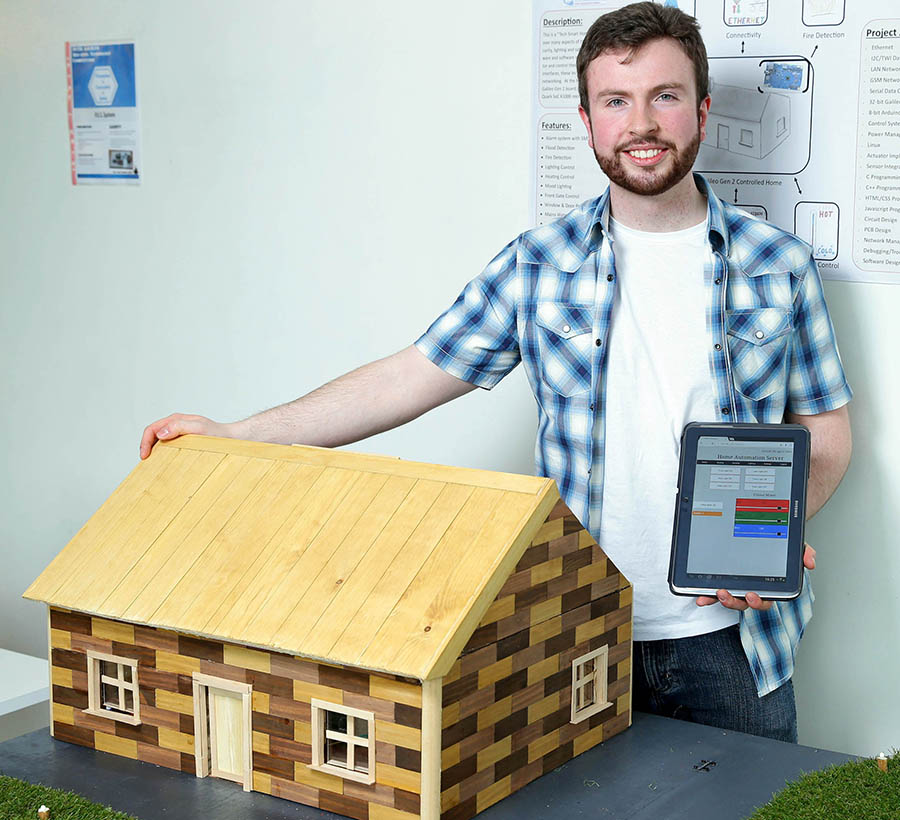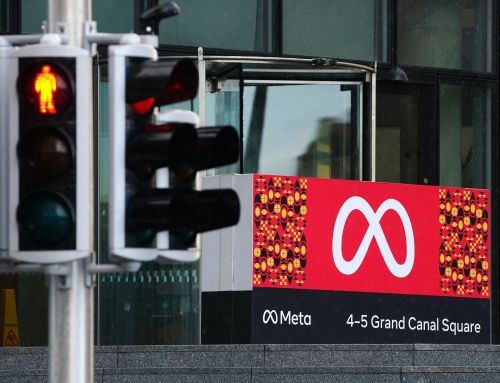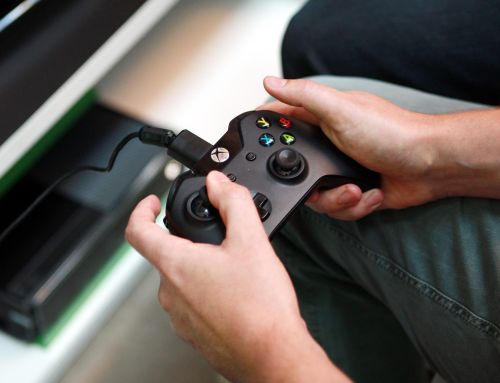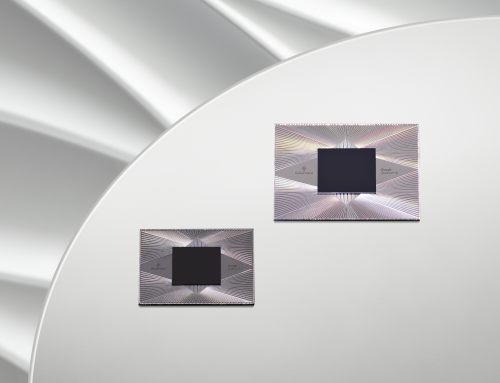
Colin Gill with his G Tune, automatic guitar tuner one of the winners at the final of the Intel 3rd level Galileo competition where students design Internet of things applications with the Intel Galileo board. Pic: Marc O’Sullivan
On Friday April 8th the final of the Intel Galileo 3rd Level Technology Competition took place at the Science Gallery in Dublin. The competition, which has been running since the beginning of January, is open to all 3rd level undergraduate students on the island of Ireland.
The competition invites students to create projects based on the Irish designed Intel Galileo board. The Intel® Galileo board is the first in a family of Arduino*- certified development and prototyping boards based on Intel architecture and specifically designed for makers, students, educators, and DIY electronics enthusiasts.
The collaboration with Arduino sought to inspire creativity, learning and invention with Makers and Students and development kits and software programming interface that make it easier for artists, designers and other do-it-yourself enthusiasts – who often don’t have technical backgrounds – to create interactive objects or environments.
To further spur innovation across the entire computing spectrum, Intel went on to provide 50,000 Galileo boards to universities worldwide and since 2014 almost 1000 boards have been provided to 21 different institutions across Ireland who have been integrating them into curriculum plans and using the boards for a variety of research projects.
This was the second year of the Intel Galileo Technology competition which was created to give students the opportunity to showcase the projects that they have been creating with the Galileo boards.
Following the first round of the competition, which involved students submitting their project ideas and a short video summary online, a shortlist of finalist projects was selected. The 8 finalist projects came together on April 8th for a special showcase judged by representatives from Intel’s Internet of Things group.
The 8 finalist Projects were:
- Cereal Monitoring System by Alan Holland, GMIT
- The CMS (Cereal Monitoring System), which is programmed with the Intel Galileo Gen 2, gathers data from farming crops such as barley, oats and wheat. The goal of the project is to make this system into a working prototype that will record data such as temperature of soil and air over the GSM network, and store this data on the SD card providing critical data to farmers who can make decisions on how to manage their crop.
- Bluetooth and Wi-Fi controlled data gathering car by Ronan Watkins, GMIT
- The car can be controlled by a website or an Android app. The smartphone has control over the movements of the car, with the integrated accelerometer on the phone being used to control the steering of the car which uses a servo motor for more precise steering than a DC motor. The Galileo sends data from a temperature sensor, ultrasonic sensor and light dependent resistor to the smartphone and website and the user can then command the Galileo to post this data to Twitter. The car has a camera attached to it which streams to the website and can be instructed by the user to take pictures and save them to the SD card located on the Galileo and post them to Twitter.
- G-Tune by Collin Gill, GMIT
- This project is an automatic tuner for guitarists. It works by sampling incoming plucked strings, running a fast fourier transform, finding the fundamental of the sampled waveform and uses that data to turn motors (via PWM) in the correct direction. Once the appropriate pitch is achieved the motors stop. A user will use an app to communicate back and forth with Galileo. The app will allow user to select what string he/she would like to tune and also what pitch he/she wants to tune too.

David Walshe from GMIT with his project Tech Smart Home, one of the winners at the final of the Intel 3rd level Galileo competition. A total of 8 projects made it through to the final where students design Internet of things applications with the Intel Galileo board. Pic: Marc O’Sullivan
- Tech Smart Home by David Walshe, GMIT
- The goal is to automate the control of many aspects of the home, including heating, lighting and security systems, and to give an interactive user experience. At the heart of this project is the Intel Galileo Gen 2 which runs a webserver giving the user full control of their home. The Galileo communicates with many subsystems using I2C, each controlling a separate feature of the home.
- P.E.S. by Wai Hong Keet, Dundalk IT
- P.E.S system is an early warning system that allows users to detect temperature changes, the range of the fire, carbon monoxide(smoke) level to prevent fire occurrence. All of the data is uploaded to ThingSpeak, an online platform for the users to access and to document them as a record of when the incident happened. A voice module was installed in the system to warn the user if the user was still in the affected area during the incident.
- Plants need nurturing by Yipeng Shen, Carlow IT
- The Flower PIOT can download current time and upload the current soil moisture and temperature to the cloud. The interface includes two indicators on the screen, one which shows the current time and the second which shows the soil moisture, temperature and the status of flower. A smartphone could display these values and when the flower doesn’t have enough water, the red LED would be turn on and an email would be sent to your mail automatically to remind you to water.
- Iot Security Evaluation by Dáibhéid Denmead & Niall Myron, DIT
- This project evaluates the security aspects of an IoT configuration using a Genuino 101, an Intel Galileo and node-RED. The Genuino 101 acts as a peripheral device and sends an advertisement when a sensor is triggered. The Intel Galileo behaves as the central device and scans for advertisements. When an advertisement is discovered it connects to the peripheral, reads the information and sends it to the cloud. A node-der server is used to retrieve data from the Galileo, process the data and then send it out to the peripheral device. The end device receives a notification via Twitter from the cloud and a security investigation of the entire communication process is carried out.
- “Frida” the smart fridge by Elias Kelly & Julia Faulstich, IADT
- This is a smart fridge using rfid tags. The fridge has multiple sensors that detect temperature, light, weight and rfid tags. The device sits on the top of the fridge, if the fridge opens the light sensor gets a value and triggers more code to be executes such as the scanner being activated. After a second scan happens the fridge logs the current weight and compares it to when it was opened in order to calculate the weight of an item. If no other item is scanned and the fridge is closed we assign the difference between the last fridge weight and the new fridge weight. Once an item is scanned it is stored in a json file and is view able on a web application. The web application shows the foods currently in the fridge and assigns a weight value to them based on code that gets executes when scans happen.
The 8 finalist projects, who were vying for a top prize of €1000, were judged by representatives from Intel who selected two projects as overall winners such was the high standard of the competition. The winning projects, both from Galway-Mayo Institute of Technology (GMIT), were Tech Smart Home by David Walshe and G-Tune by Collin Gill.
The overall prize was presented by Denis Dempsey, Director of Operations for IoT at Intel, who said “What I saw here today was a fascinating mix of the potential of smart connected intelligent devices being applied to precision agriculture, musical note analysis and smart home appliances. The Galileo competition has one again demonstrated the high standard of innovation and creativity amongst Irish students”.
To find out more about the Intel technologies for the maker community visit www.intel.com/maker.









